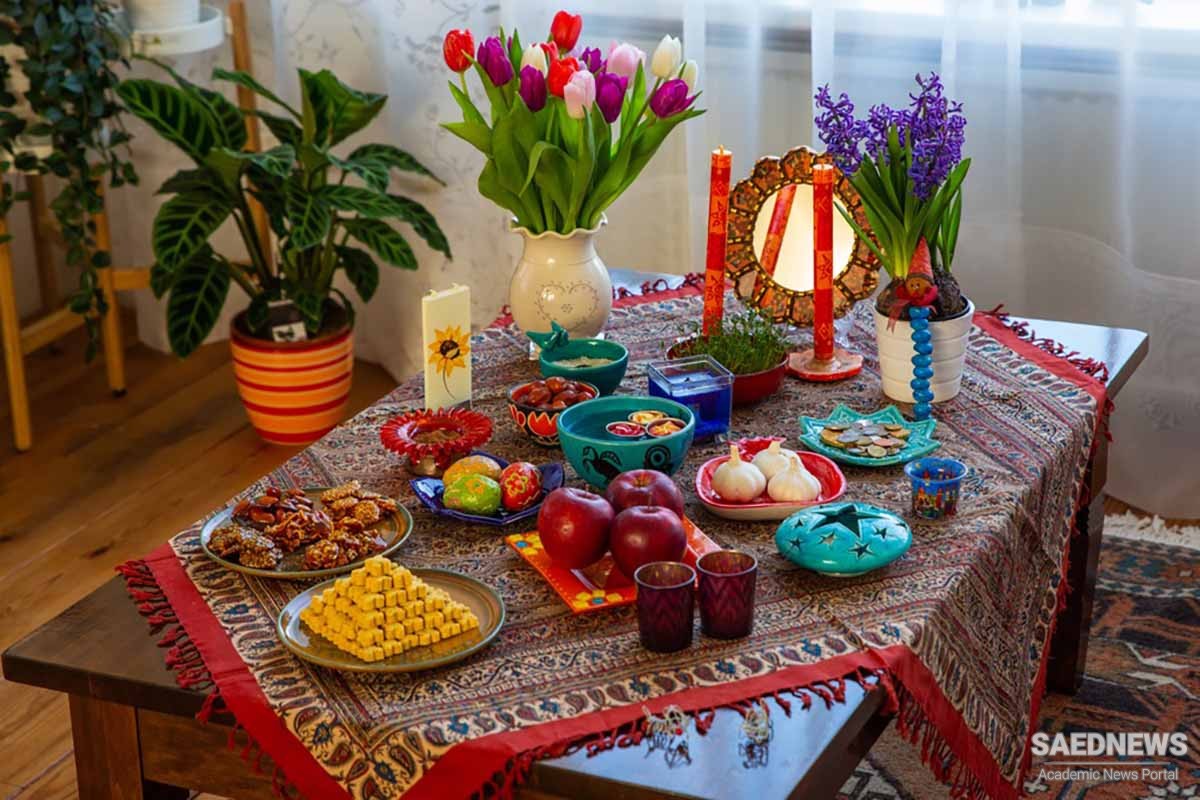Haft Sin is indeed rooted in a sacred numerical understanding of universe. If "Haft Sin" as the basic setting of the Nowruz has seven key elements, it is due to the sacredness of the number seven. It refers to the Seven Fundamental Properties of "Ahura Mazda" the Godhead of Zoroastrianism. These seven properties constitute the purity of the essence of Ahura Mazda.
Ancient Iranians used to decorate a Sofreh (tablecloth) with objects each one of which represent a key property of the Lord God, i.e. Sabzeh (symbol of luminosity and richness), Atashdan (symbol of light and heat), milk (symbol of renaissance and resurrection and rebirth), egg (symbol of race and seed), mirror (symbol of transparency), Sinjid (symbol of love and generation), Sib [apple] (mysteriousness of love), Anar [pomegranate] (sacredness), Sekkeh [coin] (symobl of divine bounty), Fish (symbol of passage of Esfand), Narinj (symbol of globe), Bid Meshk flower (symbol of divine properties).
There were also other elements including grains, date, cheese, sugar, branches of sacred tree of pomegranate, olive, fig along with the holy scripture on the Sofreh Haft Sin.
Some sources have siad that Iranians that in pre-Islamic era, Iranians had "Haft Chin" and Achaemenids would serve their food on seven chinese containers.
There is also another theory suggesting that the Sofreh was decorated with "Shin", i.e. those objects the names of which begin with "Sh": Sham, Sharab, Shahd, Shemshad, Sharbat, Shaqayegh, and Shakhe Nabat.
In Sassanid era, "Haft Shin" became popular and Shemshad along with other Nowruz Shins was used on Sofreh as the symbol of green and eternity.
In some of the villages, Haft Sin traditions were popular as used in the plate of food. Haft Sini turned into Haft Sin later.


 Sofreh Haft Sin: Symbolic Table for Nowruz and Beauties of New Year in Iran
Sofreh Haft Sin: Symbolic Table for Nowruz and Beauties of New Year in Iran














































